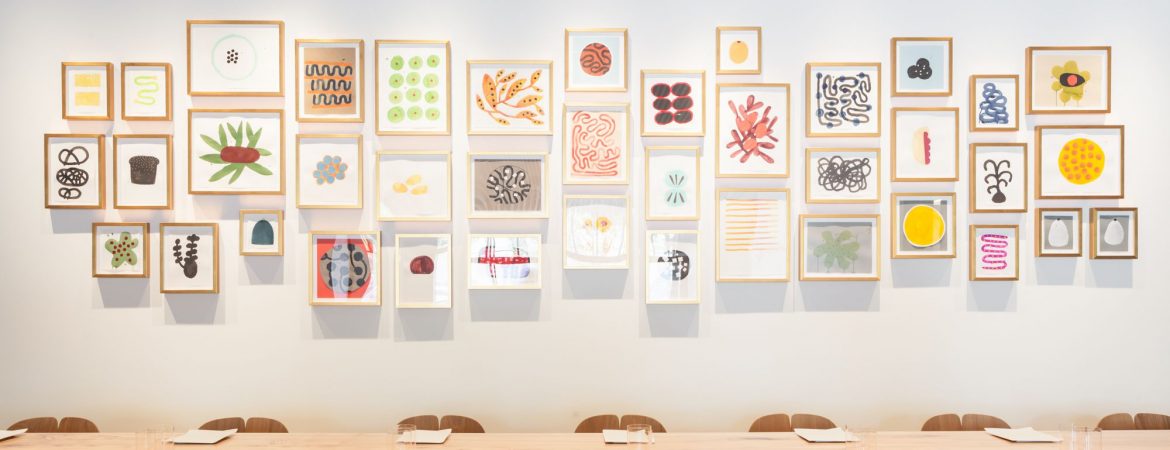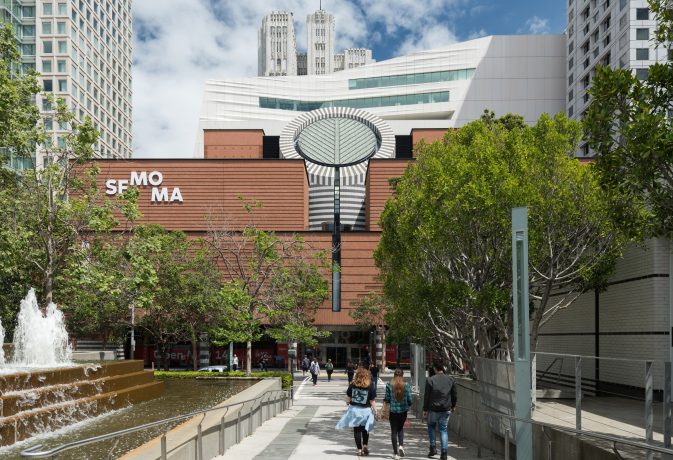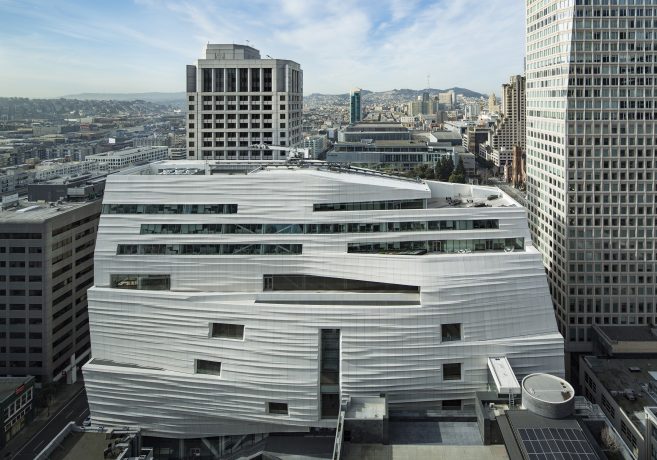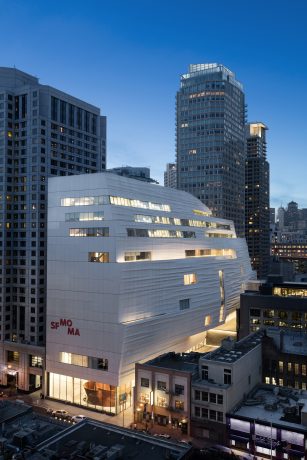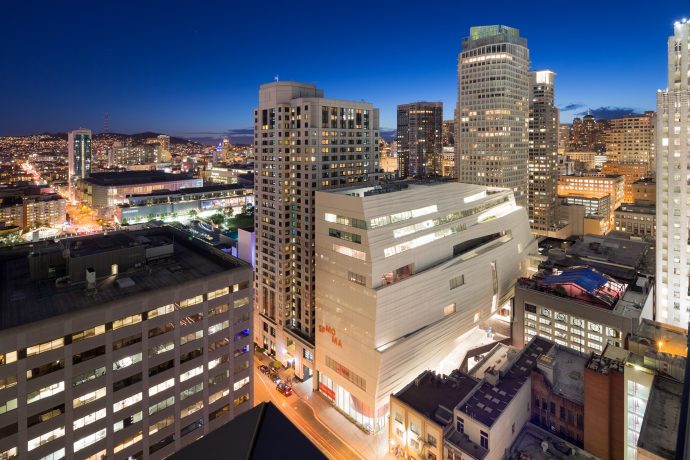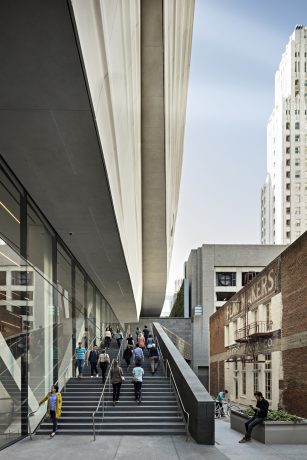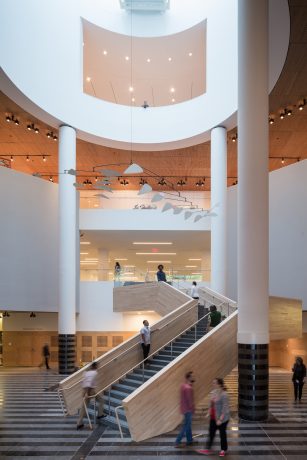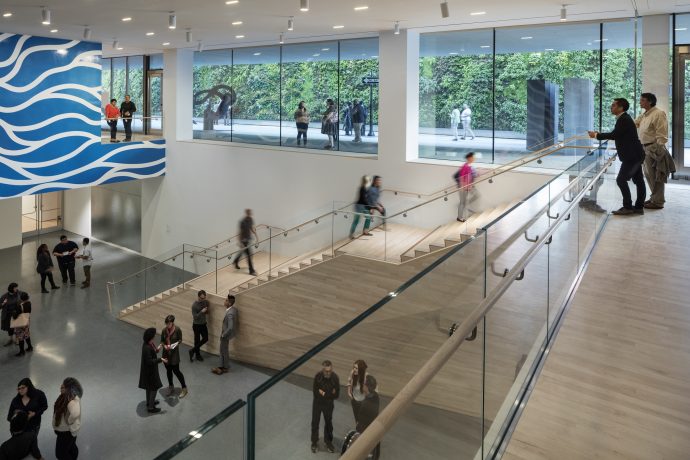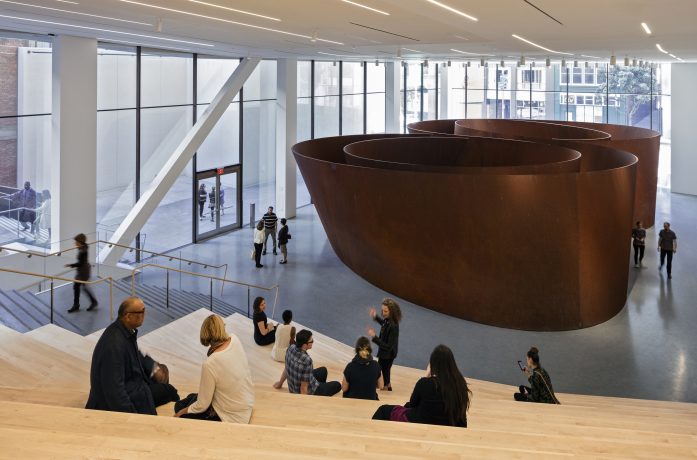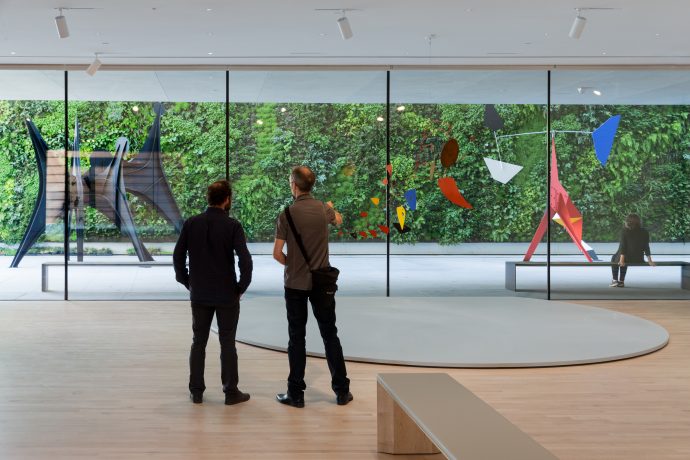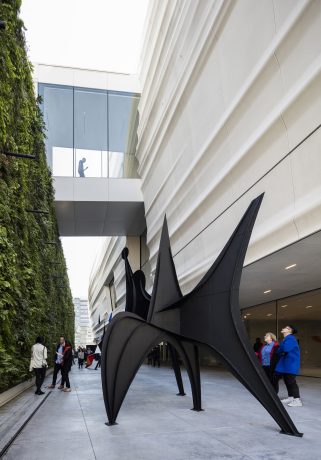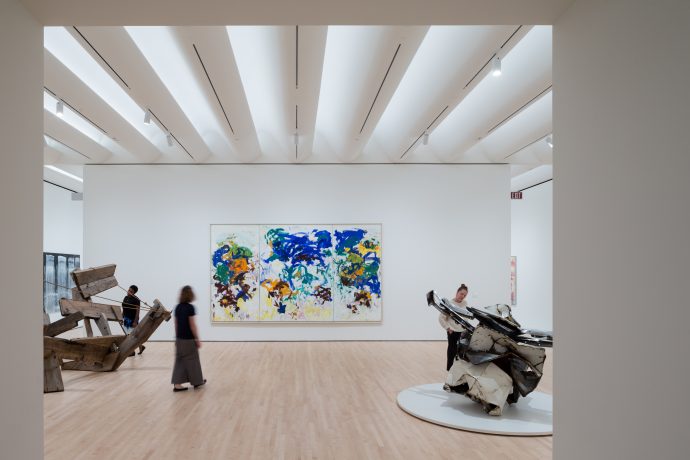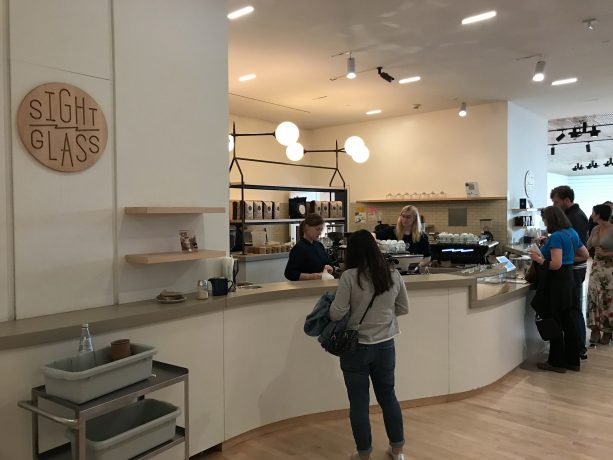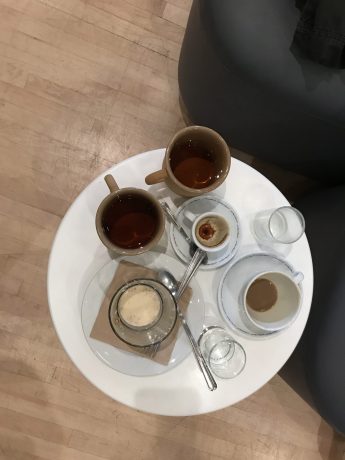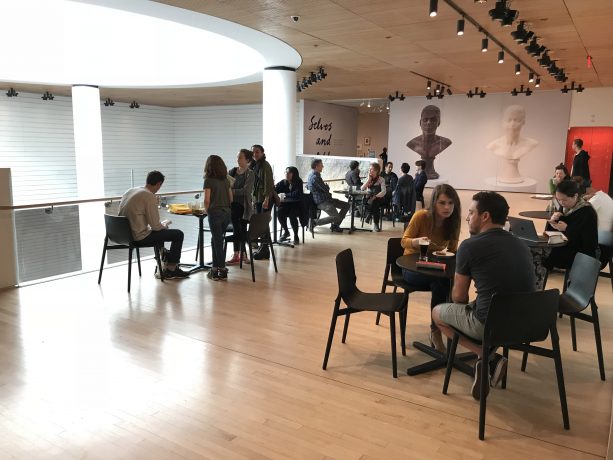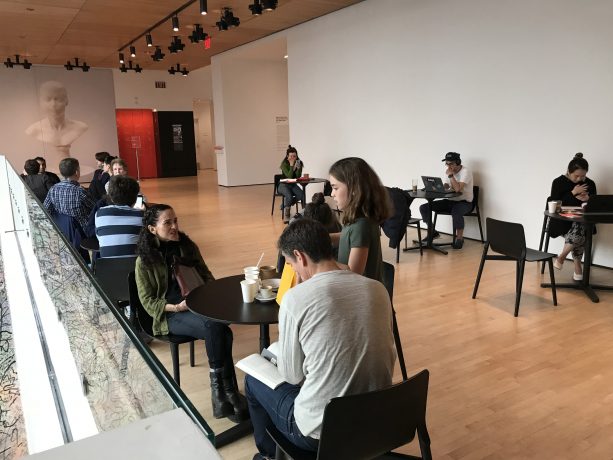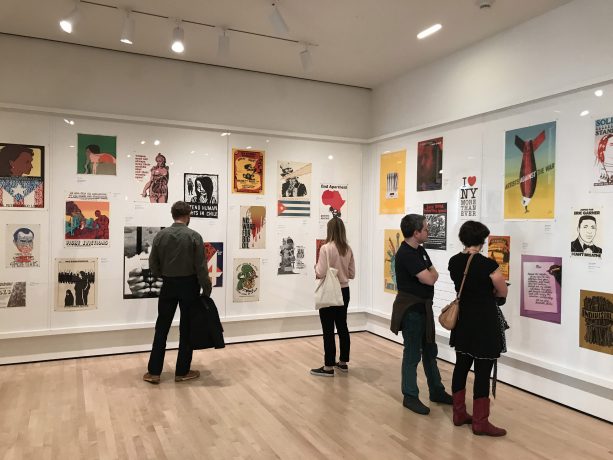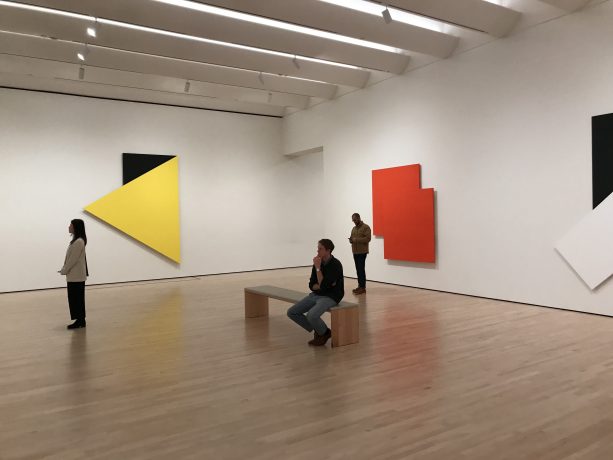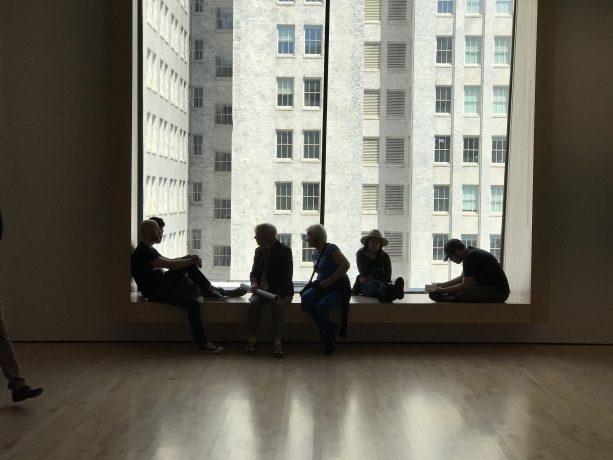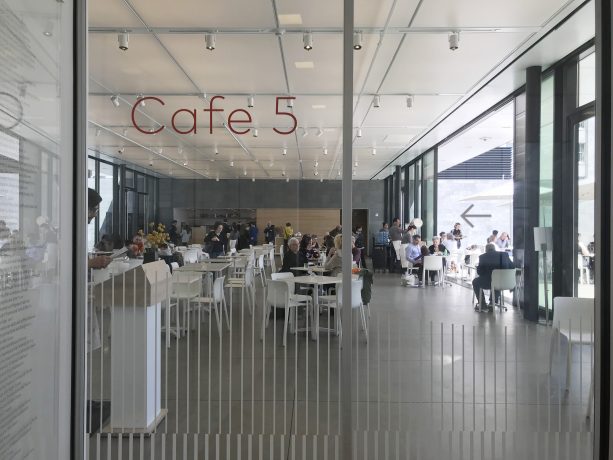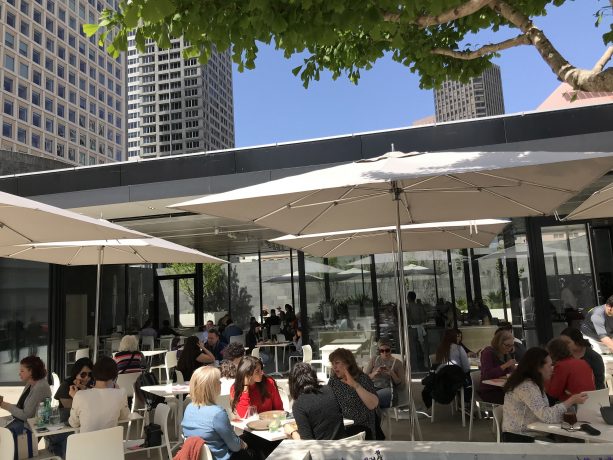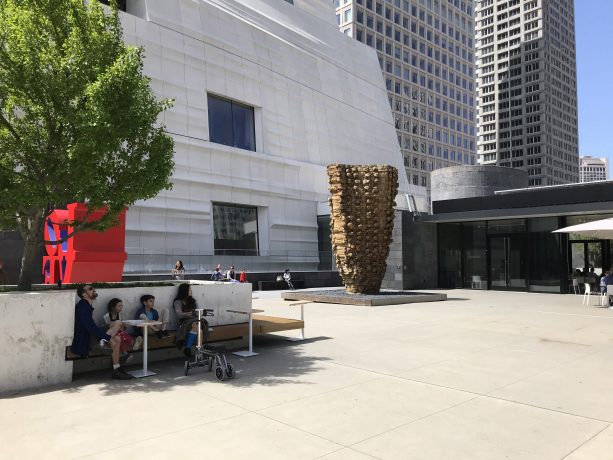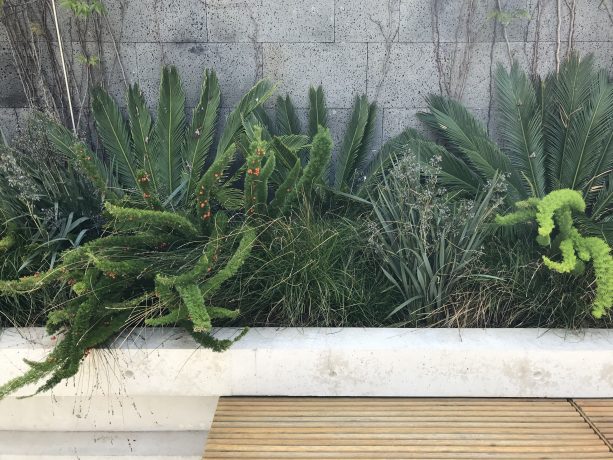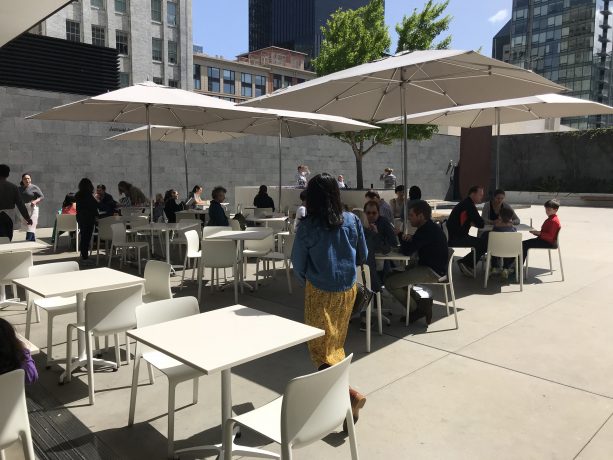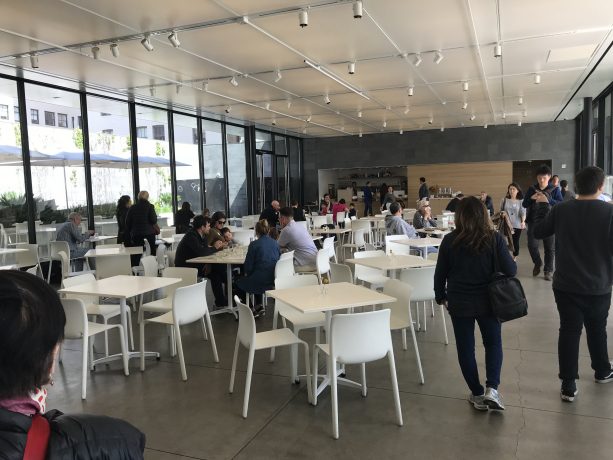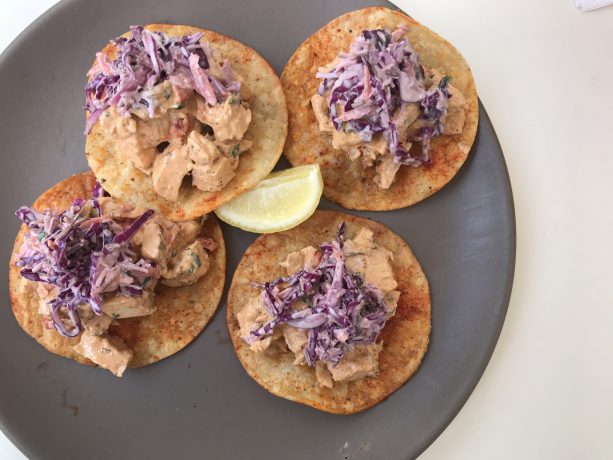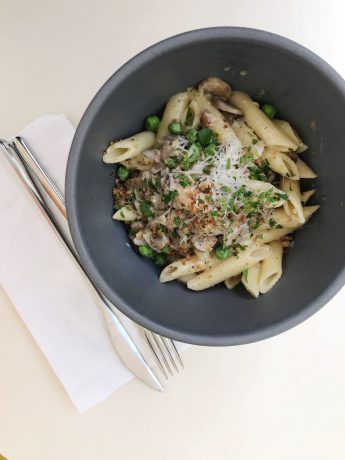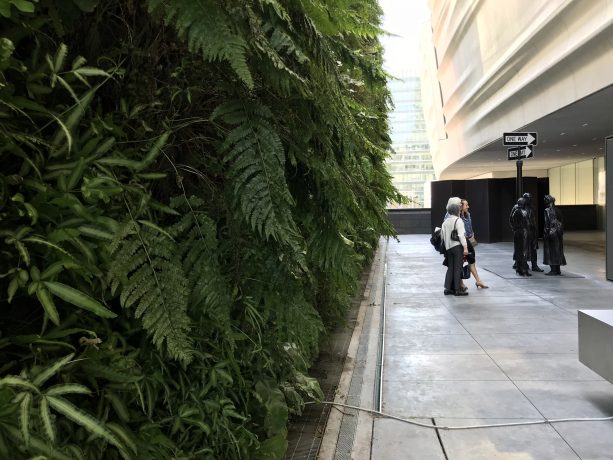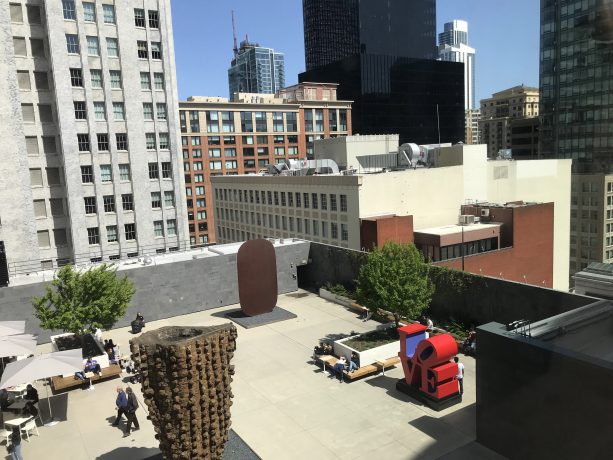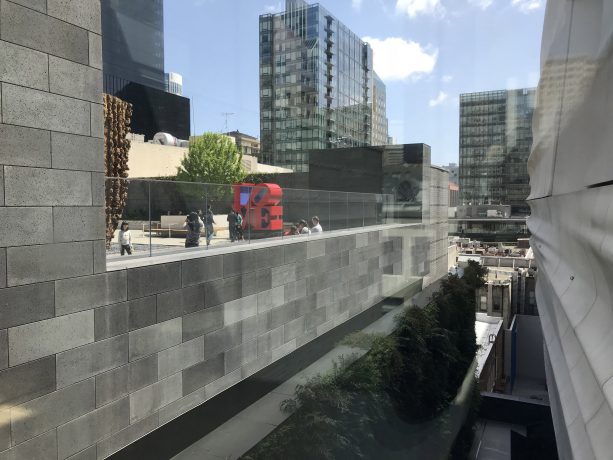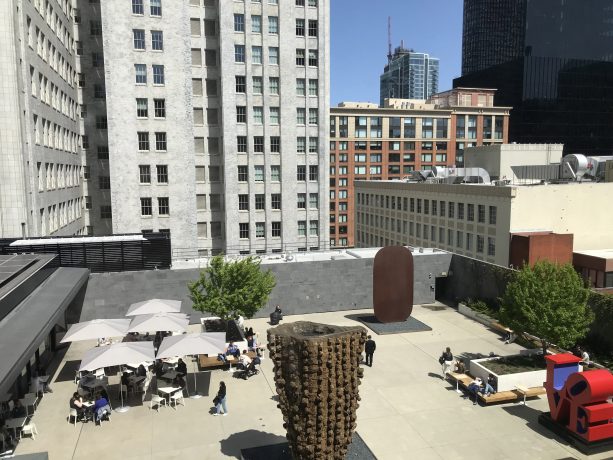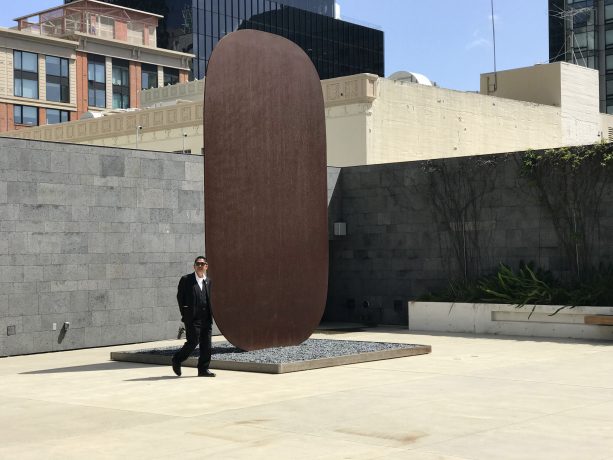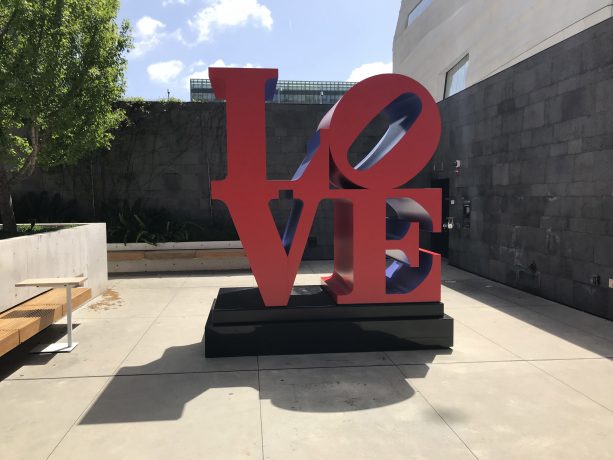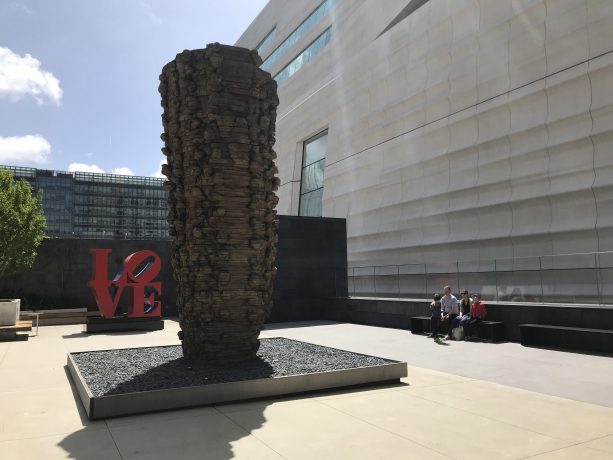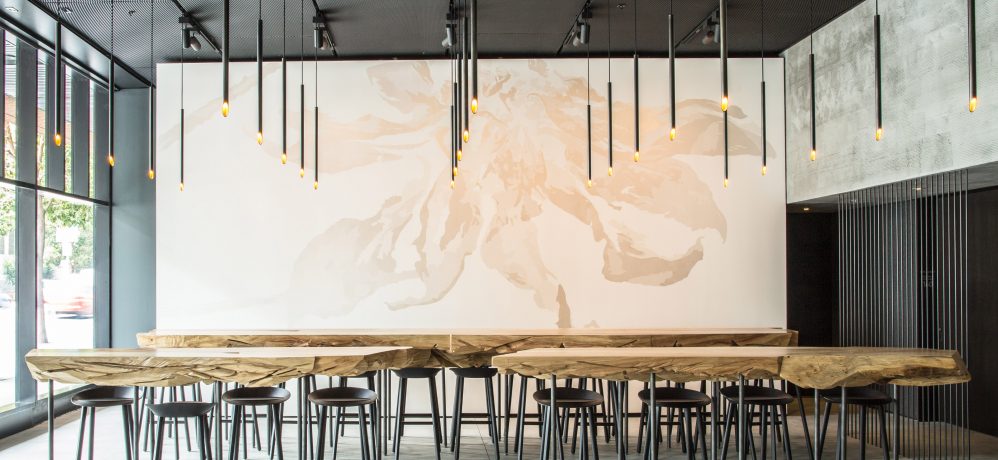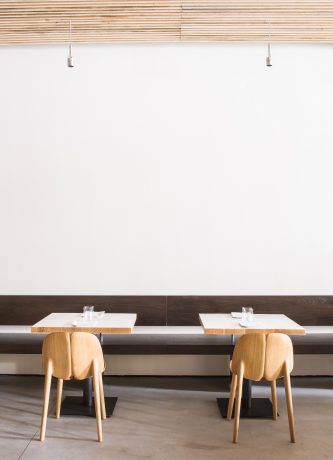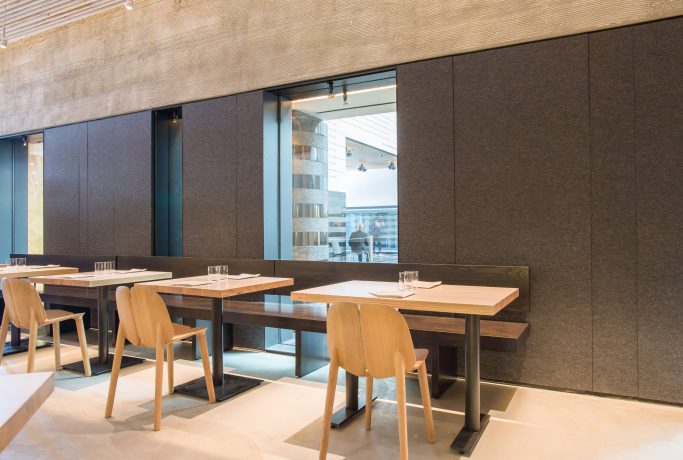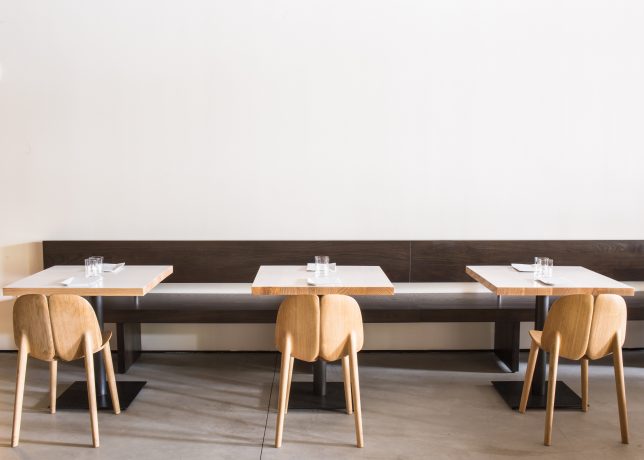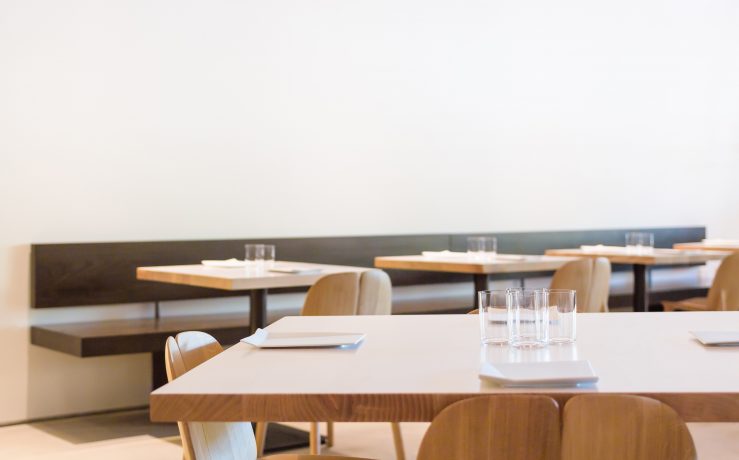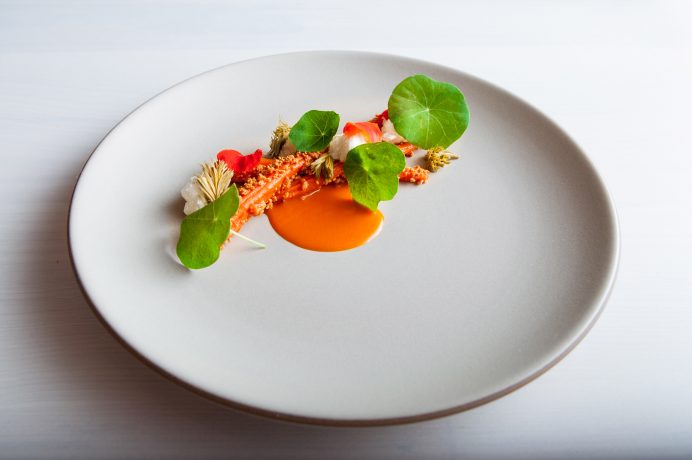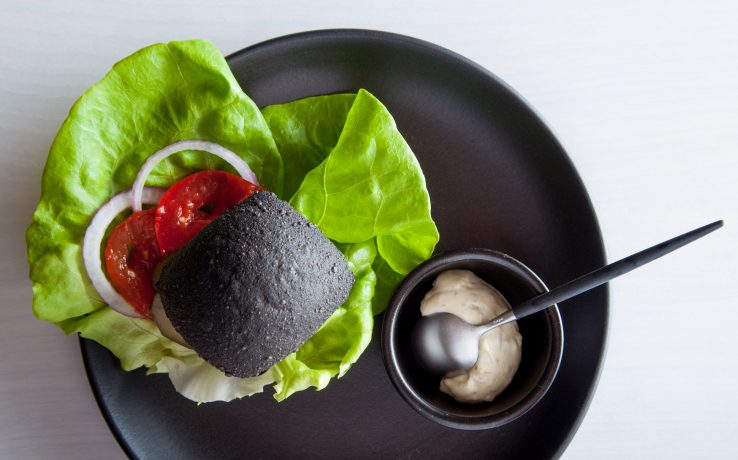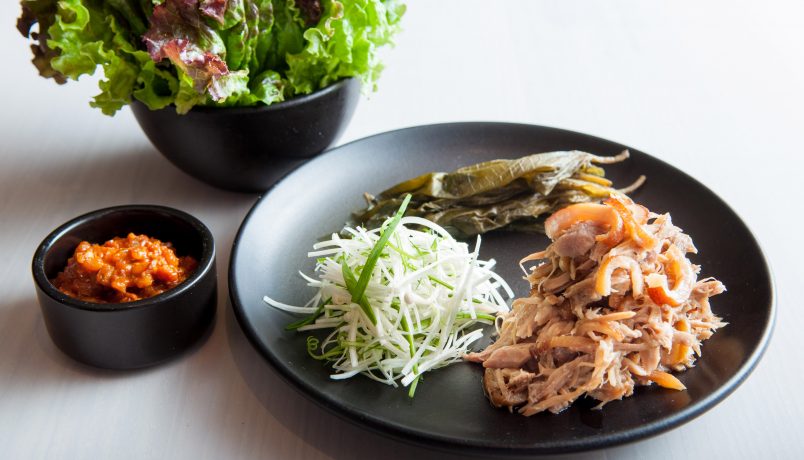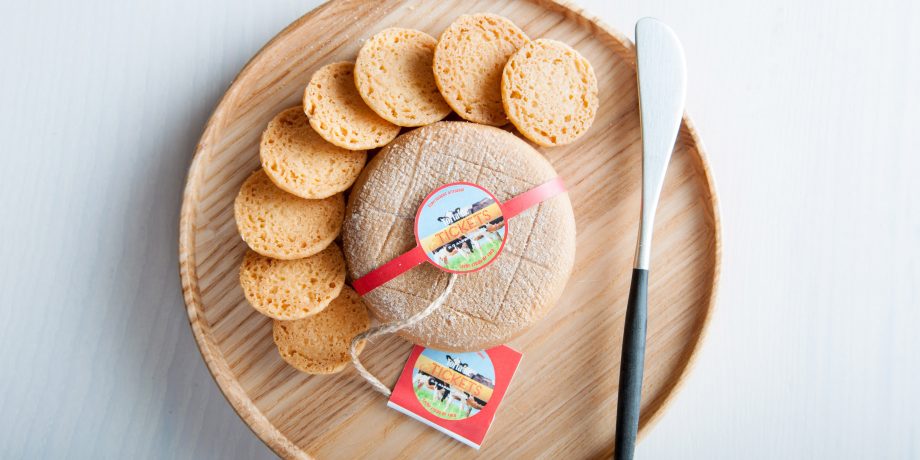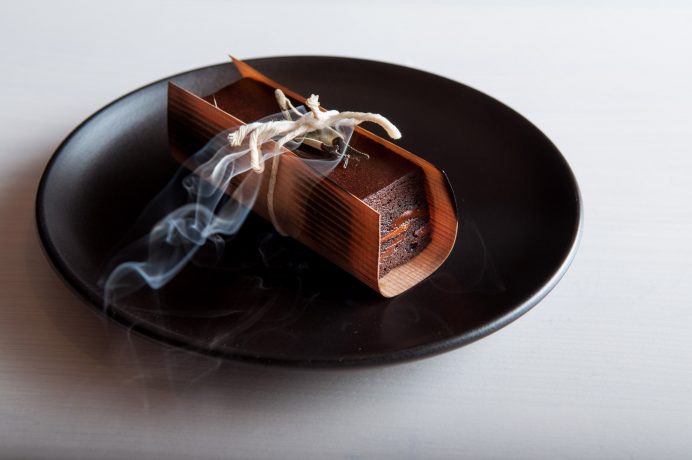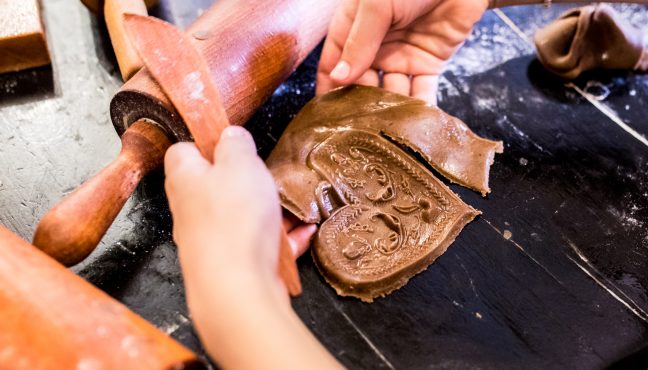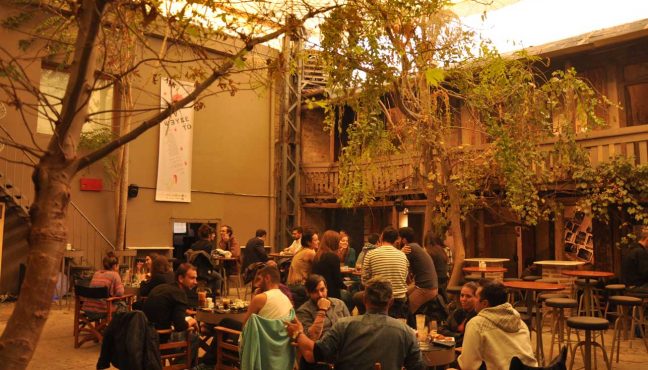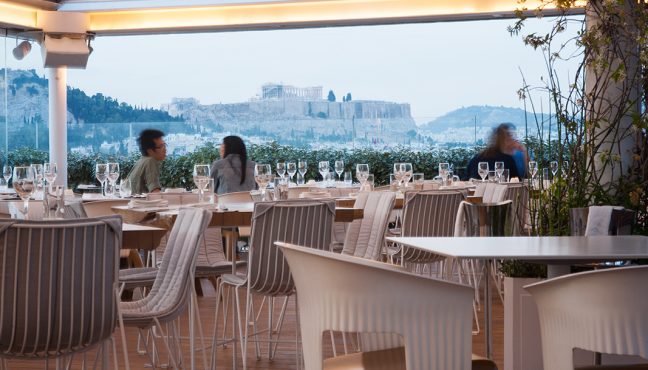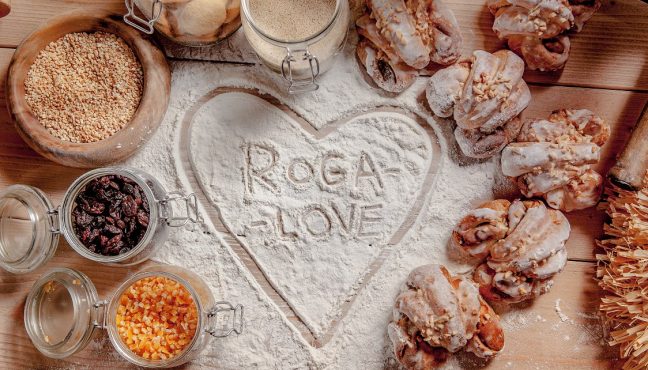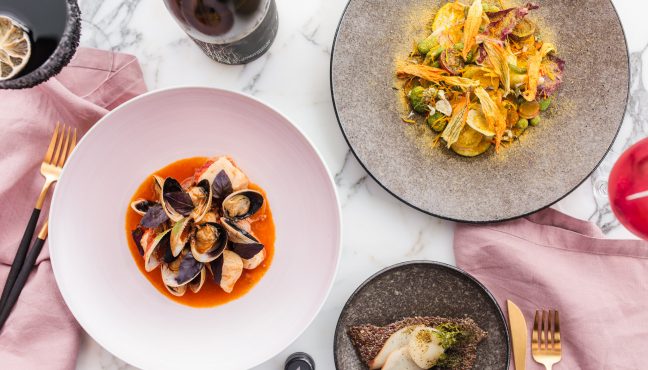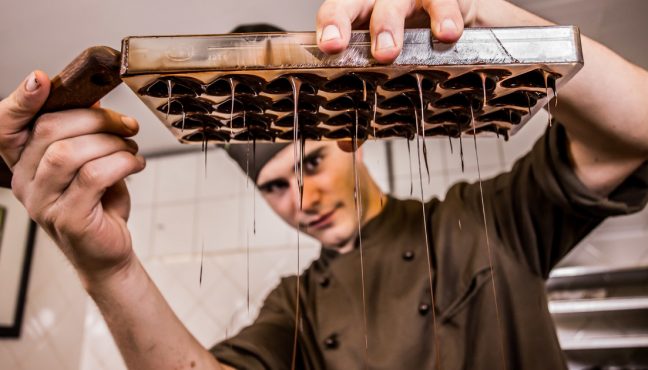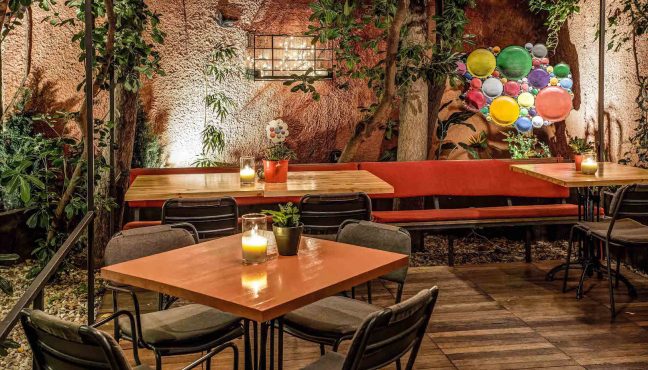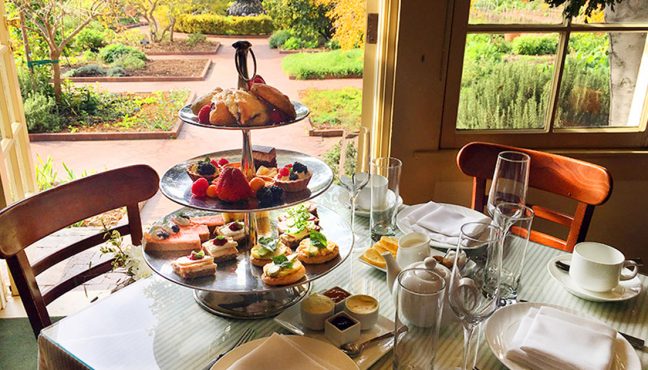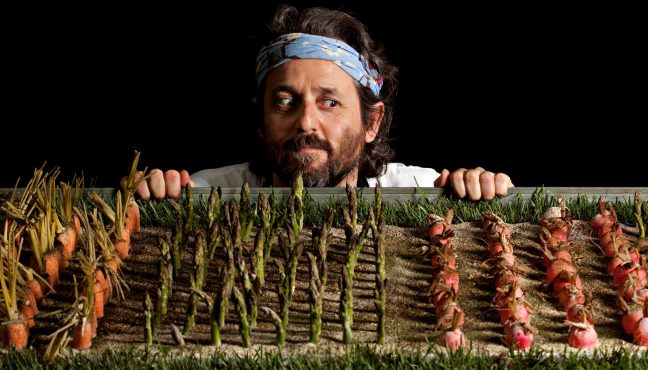In the last decade, dining experiences at museums have morphed into something entirely different from the glorified cafeterias I remember from my youth. This seems to be a part of the broader trend in art museums to make everything into an aesthetic experience. Once, the only available lunch at any given institution was a cold sandwich, outsourced from the local grocery store at best. Those days are over, at least at the San Francisco Museum of Modern Art.
Being housed in the city of a million Yelp reviews, any dining options at SFMOMA are up to the scrutiny of locals used the city with more Michelin 3-starred restaurants than New York City. Café 5, located on the fifth floor of SFMOMA, is a bright space with two walls of windows that open on to the rooftop sculpture garden. Whether you’re enjoying a cup of espresso inside on a foggy day or basking in the sun with a citrus tart, you’re treated to a view of lush plants and a sliver of the San Francisco skyline.
The restaurant is accessible via a sliver of a sky bridge, which adequately sets it apart from the rest of the galleries and gives you a sense that you’re leaving one world, dedicated to the visual arts, and entering a completely different one, dedicated to olfactory pleasures. If the weather permits, or you’re willing to brave the chill, the sculpture garden is truly a sight to behold. It has an eclectic convergence of art and nature, with objects from the likes of Robert Arneson and Ellsworth Kelly.
But what about the food? After all, all this aesthetic wonder could still be ruined by an uninspired menu and a soggy bagel. SFMOMA’s website describes Café 5’s fare as “California-fusion” which is a surprisingly succinct way of illustrating what can be found on the seasonal menu. The menu demonstrates not only the museum’s dedication to crafting dishes with only the freshest ingredients, but also a sort of compulsion to represent the international flavors that make up the distinctive California taste.
I had the opportunity to try the Chicken Chipotle Tostadas, made with Pink Lime-Coconut Slaw, Cilantro, and impeccably crisp Corn Tortillas. The dish was presented on a gray ceramic plate, with each tostada piled high with all the fixings. I was especially fond of the fermented, sweet-sour flavor of the Lime-Coconut Slaw, which played well off the subtler, zestier flavor of the well-seasoned chicken.
For those unfamiliar with the underrated cousin of tacos and burritos, tostadas are pretty much any meal with a fried corn tortilla as a base. Obviously, it’s Mexican-inspired cuisine, but a less cliched option and one that integrates flavors from both north and south of the border.
Restaurant tip, from a not-quite pro: always go with a friend. Why? Because you can sample one another’s dishes and compare. My partner-in-crime ordered the Creamy Penne Pasta with Spring Peas. It has all the makings of a greatness: earthy Boscaiola Sauce paired with Bacon, Mushrooms, Fresh Herbs, and Parmesan. It’s definitely quite rich, but not terribly heavy, meaning that you’ll have the fuel to appreciate all seven floors of SFMOMA, but won’t feel too compelled to take a nap after lunch.
All of the dishes are presented with suggested wine pairings by Meiomi and Kim Crawford, with additional drink choices listed on the menu. If you’re not in the mood for alcohol, there’s always the Ghirardelli Hot Chocolate, which is pretty much the excellence you would expect from a company that has been crafting bittersweet treats for San Franciscans since 1852.
Of course, the menu also offers dessert and small-plate options, if you’re not in the mood for a full meal or just really want to try out their excellent pastries, which are baked fresh by a patisserie on Valencia street called Craftsmen and Wolves. According to SF Eater, these parties are among San Francisco’s most iconic.
My personal favorite is the Valrhona chocolate croissant. It’s shaped like a square, because apparently crescent-shaped croissants are too mainstream. No matter the shape, it’s a flawless rendering of the French classic, layered with chocolate and butter.
Sightglass coffee is served in a mini coffee-shop on the third floor, adjacent to SFMOMA’s famous plant wall and photography galleries. Beloved in San Francisco’s SOMA neighborhood (which is the same vicinity that SFMOMA calls home), but virtually unknown elsewhere, Sightglass crafts an espresso blend made specifically for the museum, along with classics from their flagship branch such as vanilla cold brews and utterly flaky almond croissants.
In fact, the scent of coffee is an almost irresistible call as you step on to third floor. It seems to permeate every space. No matter where you wander in the labyrinthine galleries you never feel far from the coffee shop. This is also a wonderful place to kick back and relax in. I like to start at the top of museums and work my way downwards, and Sightglass is positioned perfectly so that I can take a rest before exploring more art. There are small café tables and chairs surrounding the balcony that looks down on to the first floor, with a massive skylight several stories above. Architecture of this caliber warrants an extended period of contemplation.
The freshest addition to SFMOMA’s dining scene is In Situ, which is an eclectic gallery of some of the world’s best dishes. In Situ is to restaurants as SFMOMA is to art museums. The best of the best. The cream of the crop.
Head chef Cory Lee (who also is responsible for Benu, a San Francisco restaurant with three Michelin stars) brings together the very best of chefs around the world. Selections in the current menu include Cuttlefish Cappuccino (Italy, 1996), Halibut Stuffed with Egg Yolk (Munich, 2010), and Toasted Rice Sherbet with Yuzu Curd (an In Situ original), among a handful of other meticulously curated dishes.
If SFMOMA is a global collection of incredible modern art, In Situ is likewise an assemblage of internationally renowned flavors. The menu is arranged by the size of the dish, with smalls, mediums, and larges. This makes it much easier to share amongst friends; order a few of the small or medium dishes and you can try a bit of each without feeling overly full. It’s an excellent way to get a feel for some of their truly unique dishes.
